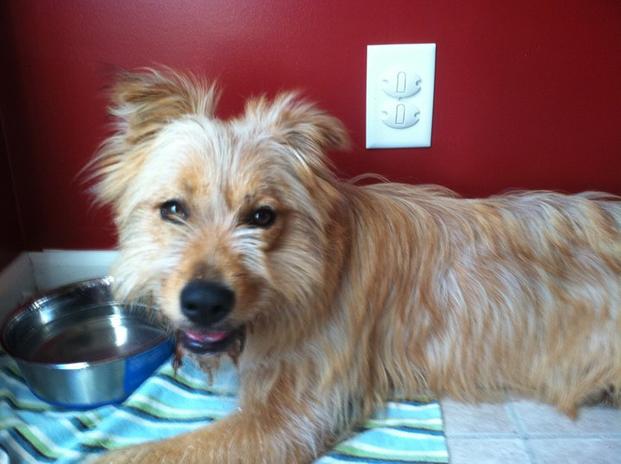It was puppy-love at first sight.
My pre-teen friendship with my Gordon Setter, Taffy (full name: Salt Water Taffy Brite Star), was the kind you read about in books like Where the Red Fern Grows and Lad, a Dog. Military life notwithstanding, I knew that my son should, nay MUST, grow-up with a dog. And so off to the on-post animal shelter we trotted, determined to bring home a loveable mutt.
What we ended up with was Chloe, the most docile towards children, defensive towards strangers and down right vicious to wild bunnies pup you’ll ever meet. She was found wandering around post. They guessed that she was just about a year old and proclaimed her a “terrier mix.”
Which was lucky for us, because after living with her for more than a year, I’m pretty sure she’s a fair part Chow-Chow – one of the many dog breeds often banned by posts and bases.
But there’s no way to tell that she’s a Chow mix -- or anything for the matter -- for certain. We don’t know her mom’s lineage. Who knows who the puppy baby daddy was. The designation of “terrier mix” was based entirely on impressions – that her coat looked long (we’ve since cut it), that her ears sat this way (they don’t always do that), that she looked like she wanted to dig (she never digs) – not on any actual evidence.
There is equal evidence to being a Chow. That long coat is kinda poofy, too. Her tongue has black spots. She's kinda Chow like around the eyes.
Yet had the veterinarian written “Chow” on her papers instead of “terrier,” we would be blocked from living on many Army posts while we own her.
Housing breed bans have not been the norm in the military community forever, and it’s difficult to pin-point exactly what brought them about. But the birth of the policy appears to be largely tied to the 2009 privatization of military housing, and the need of those housing management companies to secure insurance. Because aggressive dogs can result in injuries and, therefore, an insurance liability, companies take the easy road out of the problem and ban breeds they consider questionable. It’s not about overall safety for those living in housing – it’s about keeping insurance costs low.
But there is no master list of banned breeds held by all the services and all the bases. Chows, for example, are banned in some places but not others. And, like we have run before here on SpouseBuzz, there’s no evidence that breed bans work at all. Sure, some breeds tend to be more aggressive than others, but evidence shows that breed bans don’t work – it’s holding owners accountable that is needed.
If Chloe had been labeled a “Chow,” instead of a “terrier,” we’d be in a tight, housingless spot. And if living on post was our only real option, we’d be trying to figure out how to make it work without giving up the hairiest member of our family.
So how would we do it? Here are four suggestions on how to get your “banned” dog on base without actually breaking any rules.
1. Call it something – anything – other than the banned breed. Unless you and your Rottweiler are headed to the Westminster Dog Show next month, visual identification of any breed can be faulty, and DNA tests can be wrong. According to this, vets are even moving away from labeling a dog any specific breed at all unless there’s a DNA test to back it up. So call your dog that might be a part-American Pit Bull Terrier a “terrier mix” (since, technically, it is) and you’re not breaking any rules. Just make sure you have vet paperwork to back you up.
2. Ask your vet or shelter to help you out. We didn’t know that the on-post vet clinic was doing us a solid when they labeled a Chloe a “terrier mix” instead of a “Chow mix.” But they probably knew it. Vets and clinics want you to adopt the dog, and they want you to keep the dog. Labeling it a banned breed makes both of those things less likely.
3. Make your neighbor some muffins. So your possibly part-Doberman dog your vet labeled a “hound mix,” (well played as Dobermans are part of the hound family) is making your neighbors uneasy? Make them some mini muffins, introduce them to your sweet hound-mix girl and count yourself lucky – you now have new friends, you got to eat a muffin, and no one is complaining to housing.
4. Don’t roll over (or play dead). If the mini-muffins don’t work, or the maintenance guy goes back to the office and says your dog looks like one of the banned breeds, go the mattresses. Since no one can prove a breed anyway, your appeal has legs (especially if your vet is on board).
Edit: A petition organized by the group Dogs on Deployment seeking breed-nuetral housing policies is making the rounds and has already collected over 26,000 signatures. To see it go here. To follow the issue's progress, check out this Facebook page.









